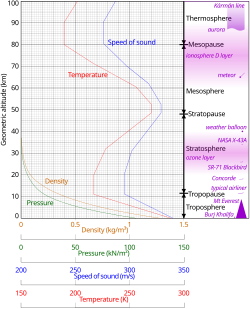I hope we also have an air-weight / air-pressure value for planets.
IRL, the air weights about 1.1 to 1.3 kg/m^3 and helium about 1/6 or 1/7 at sea level (hydrogen about 1/2 of helium).
Vacuum would weight nothing, but the containment of it would. It would be a huge advantage because helium+hydrogen have a dissipate over time through materials.
With this, we could build Vacuum-balloons and air-ships (which would be more effective if the air-weight would be higher than the weight of materials required to confine air outside of content with lower weight).
IRL you would need about >4x4x4=64m^3 to elevate a single human body of a smaller adult or heavy child
(+ something additional to elevate the weight of the confinement; assuming sea-level air-pressure and composition)
There we have
 Source: http://en.wikipedia.org/wiki/Atmosphere_of_Earth
Source: http://en.wikipedia.org/wiki/Atmosphere_of_Earth
IRL, the air weights about 1.1 to 1.3 kg/m^3 and helium about 1/6 or 1/7 at sea level (hydrogen about 1/2 of helium).
Vacuum would weight nothing, but the containment of it would. It would be a huge advantage because helium+hydrogen have a dissipate over time through materials.
With this, we could build Vacuum-balloons and air-ships (which would be more effective if the air-weight would be higher than the weight of materials required to confine air outside of content with lower weight).
IRL you would need about >4x4x4=64m^3 to elevate a single human body of a smaller adult or heavy child
(+ something additional to elevate the weight of the confinement; assuming sea-level air-pressure and composition)
There we have
- A true reason for 1m^3 big (or larger) blocks
- Anti-Gravity
- RP-value through realism
- Some Real-Life-education
- A reason to settle in higher-pressure atmospheres (higher than on earth)

Last edited:
